APC Back-UPS 2200VA BX2200MI-MS UPS
APC Back-UPS 2200VA BX2200MI-MS stands as a comprehensive power protection solution for demanding computing environments. With 2200VA capacity and 1320 watts of real power output, this uninterruptible power supply handles substantial equipment loads that smaller units cannot accommodate. Whether you’re running a powerful workstation, home server setup, or managing critical business systems, the APC Back-UPS 2200VA provides the capacity and features needed for professional reliability.
Power instability creates cascading problems—corrupted files, damaged hardware components, interrupted workflows, and lost productivity. This unit addresses these challenges through sophisticated voltage regulation, battery backup during outages, and comprehensive surge suppression. The line-interactive topology with automatic voltage regulation corrects brownouts and overvoltages without depleting battery reserves, extending available backup time when you need it most.
Detailed Technical Architecture
Power Delivery Specifications:
- Maximum capacity: 2200VA / 1320W
- Input voltage acceptance range: 151-302V AC
- Output voltage: 230V ±10% regulation
- Frequency tracking: 47-63 Hz with automatic detection
- Transfer time to battery: 6ms typical
- Output waveform: Stepped approximation sine wave
- Efficiency rating: 95% during normal operation
Battery Infrastructure:
- Sealed, maintenance-free lead-acid technology
- User-replaceable battery cartridge (RBC55)
- Hot-swap capability maintains protection during replacement
- Typical recharge duration: 8-10 hours to 90% capacity
- Operating temperature range: 0-40°C
- Storage temperature tolerance: -15 to 45°C
LCD Display and Monitoring
The integrated LCD panel on the APC Back-UPS 2200VA BX2200MI-MS provides comprehensive operational visibility. Unlike LED-only displays, the LCD shows precise input voltage readings, output load percentage in watts, estimated runtime remaining, and battery charge status as a percentage. This granular information helps you make informed decisions during power events.
The display cycles through multiple screens, showing input frequency, output voltage, and the reason for the last transfer to battery. This historical data proves valuable when troubleshooting power quality issues or determining whether electrical service improvements are necessary. The backlit screen remains readable in various lighting conditions, from bright offices to dimly lit server rooms.
Runtime Capabilities Across Load Scenarios
Understanding runtime expectations helps set realistic operational parameters. At 300 watts (approximately 23% load), the APC Back-UPS 2200VA delivers roughly 35-45 minutes of backup power—sufficient for extended work sessions or waiting out brief service interruptions. At 660 watts (50% capacity), expect 12-15 minutes, enough time for proper system shutdown procedures.
Full load scenarios at 1320 watts provide approximately 4-6 minutes of runtime. While this seems brief, it covers the critical window needed to save open documents, close applications properly, and initiate graceful shutdowns that prevent file system corruption. Many outages last less than 5 minutes, making even short runtimes valuable for maintaining continuous operation.
These estimates assume new batteries under optimal conditions. Battery aging, high ambient temperatures, and deep discharge cycles gradually reduce available runtime. Annual self-tests help track battery health degradation over time.
Comprehensive Protection Systems
Multi-Layer Surge Defense:
- Total surge energy dissipation: 889 joules
- Maximum surge current capacity: 40,000 amperes
- Clamping voltage: 330V for optimal protection
- Response speed: sub-nanosecond
- EMI/RFI noise filtering: provides 40-45dB attenuation
The protection circuits safeguard against transient voltage spikes from lightning strikes, utility switching events, and large appliance cycling. Repeated surge events gradually degrade metal oxide varistors within the protection circuitry, which the unit monitors and reports through diagnostic systems.
Data Line Protection:
RJ-45 network protection ports secure Ethernet connections against surges traveling through network cables. These circuits safely shunt damaging voltages to ground while allowing data signals to pass unimpeded. This protection matters especially for equipment with direct internet connections or network links to outdoor cabling.
Outlet Configuration and Power Distribution
The APC Back-UPS 2200VA provides eight IEC 320 C13 outlets arranged in two groups. Four outlets deliver both battery backup and surge protection for critical equipment. The remaining four outlets offer surge protection without battery backup, suitable for peripherals that can tolerate brief interruptions.
This configuration allows strategic load management. Desktop computers, monitors, external storage arrays, and networking equipment connect to battery-protected outlets. Printers, scanners, and desk lighting connect to surge-only outlets, reserving battery capacity for essential devices while still protecting secondary equipment from voltage spikes.
A single universal socket accommodates region-specific plugs for devices with non-standard connectors. USB connectivity enables computer communication for software monitoring, automatic shutdown coordination, and detailed event logging.
Software Integration and Management
The PowerChute Personal Edition software included with the APC Back-UPS 2200VA BX2200MI-MS transforms basic power protection into intelligent power management. After installing the software and connecting the USB cable, configure automatic shutdown sequences that trigger at specified runtime thresholds.
During extended outages, the software saves open documents, closes applications in priority order, and initiates operating system shutdown before battery depletion. This automation proves crucial when power failures occur outside business hours or when users are away from their workstations.
The software maintains detailed logs of power events—voltage fluctuations, transfers to battery, brownout corrections, and surge incidents. Reviewing these logs reveals patterns in electrical service quality that might justify contacting the utility company or installing additional power conditioning equipment.
Email notification capabilities alert administrators to power events remotely, enabling proactive responses to developing situations. Schedule automatic battery self-tests during off-hours to verify battery health without disrupting daily operations.
Deployment in Professional Environments
Workstation users with high-performance computers appreciate how the APC Back-UPS 2200VA handles power-hungry graphics cards, multiple monitors, and peripheral devices simultaneously. Video editors, 3D artists, and engineers running simulation software cannot afford unexpected shutdowns that corrupt project files or lose hours of rendering work.
Small server deployments benefit significantly from this capacity level. Entry-level file servers, domain controllers, and database systems require continuous operation and graceful shutdown capabilities. The 2200VA capacity accommodates server hardware with redundant power supplies while maintaining reasonable runtime margins.
Home lab enthusiasts running multiple virtual machines, network attached storage, and experimental server configurations find the APC Back-UPS 2200VA matches their equipment demands. The ability to protect substantial computing infrastructure with a single UPS simplifies power management compared to deploying multiple smaller units.
Photography and video production studios protect editing workstations, RAID storage systems, and color-calibrated displays. Power interruptions during file transfers to large storage arrays can corrupt data or damage file systems, making reliable power protection essential for professional content creation workflows.
Physical Installation Considerations
The tower form factor measures approximately 440mm height, accommodating placement on floors beside desks or in equipment racks with optional mounting accessories. Weight reaches 20-22 kilograms when fully assembled with batteries, requiring stable placement on level surfaces capable of supporting this mass.
Ventilation requirements mandate clearance around air intake and exhaust ports. Avoid enclosing the unit in sealed cabinets, as restricted airflow causes internal temperatures to rise, triggering thermal protection shutdowns and accelerating battery aging. Minimum clearances of 50mm on sides with ventilation openings maintain adequate cooling.
Position the unit away from heat sources like radiators, direct sunlight through windows, or heat-generating equipment like laser printers. Operating temperatures above 25°C reduce battery lifespan significantly—each 10-degree increase above optimal temperature approximately halves battery service life.
Battery Management and Replacement
Battery indicators on the LCD display show charge percentage and health status. When the “replace battery” indicator illuminates or runtime decreases noticeably, order replacement battery cartridge RBC55. The hot-swap design allows battery replacement without powering down connected equipment, maintaining continuous protection.
Front panel access simplifies the replacement process. Release the front cover, disconnect the battery connector, slide out the depleted battery cartridge, insert the new cartridge, reconnect the battery connector, and close the cover. The entire process takes 3-5 minutes without tools.
Environmental conditions significantly impact battery longevity. Units operating in climate-controlled environments at 20-25°C typically achieve 4-5 years between replacements. Those in warmer conditions or experiencing frequent deep discharges may require replacement after 2-3 years. Regular self-tests help track battery degradation proactively.
Acoustic Performance
During normal operation, the APC Back-UPS 2200VA runs silently with passive cooling. When battery mode activates, an audible alarm sounds at approximately 60-65 decibels—noticeable but not painfully loud. This alarm can be temporarily muted through control buttons, though permanent silence removes important safety notifications.
Cooling fans activate during extended battery operation or high-load conditions, producing moderate white noise around 45-50 decibels. Fan operation indicates the unit is managing thermal conditions appropriately, protecting internal components from heat damage.
Understanding Output Waveform Compatibility
The stepped approximation sine wave output works perfectly with computer power supplies, networking equipment, LED displays, and most consumer electronics. These devices use switching power supplies that tolerate various input waveforms without issues.
Certain equipment types may require pure sine wave power—some server models with active power factor correction, motor-driven devices like fans, sensitive medical equipment, and high-end audio gear. Review equipment specifications before connecting devices if waveform compatibility concerns exist. When pure sine wave output is mandatory, consider models from APC’s Smart-UPS line instead.
Comparing Capacity Requirements
The 1320-watt real power capacity handles substantial loads, but understanding connected equipment draw prevents overloading. Modern desktop computers typically consume 200-400 watts under load, monitors draw 30-60 watts each, and networking equipment adds 50-100 watts. Calculate total connected load ensuring it remains below 80% of rated capacity for optimal performance and runtime.
Users with equipment approaching or exceeding 1320 watts should consider the APC Back-UPS 2200VA carefully. Operating consistently near maximum capacity reduces runtime, increases heat generation, and may trigger overload protection. In these scenarios, either distribute loads across multiple UPS units or consider higher-capacity models.
Energy Efficiency and Operating Costs
The 95% efficiency rating means approximately 5% of input power converts to heat rather than useful output. At typical loads, the unit consumes 40-60 watts maintaining charge and providing conditioning, translating to modest ongoing electricity costs. This efficiency compares favorably to older UPS technologies that wasted significantly more energy during normal operation.
Standby power consumption remains minimal when batteries are fully charged and load is light. Energy costs over the unit’s lifespan remain small compared to the value of protected equipment and prevented data loss.
Warranty Coverage and Support Infrastructure
APC provides warranty coverage for the APC Back-UPS 2200VA BX2200MI-MS, typically 3 years for the unit and 2 years for included batteries, though terms vary by region. Connected equipment protection policies offer financial backstop against protection circuit failures, with coverage amounts and terms varying by location. Register the product after purchase to activate warranty benefits and maintain eligibility for protection claims.
Technical support resources include online knowledge bases, troubleshooting guides, user forums, and direct customer service channels. The global service network ensures replacement batteries and repair services remain accessible throughout the product’s lifecycle.
Long-Term Value and Investment Justification
The APC Back-UPS 2200VA BX2200MI-MS represents significant investment in power protection infrastructure. For users with expensive computing equipment, irreplaceable data, or business-critical operations, the cost justifies itself through prevented losses during the first major power event.
Areas with unstable electrical service see returns more quickly than regions with reliable power. However, even stable electrical grids experience occasional disruptions—storms, accidents, maintenance, equipment failures—making power protection valuable regardless of location. The peace of mind knowing work won’t be lost and equipment won’t be damaged provides intangible but meaningful value.
Battery replacement costs represent the primary ongoing expense, averaging one replacement every 3-4 years under normal conditions. This maintenance expense remains modest compared to replacing damaged equipment or recovering from data loss incidents that power protection prevents.

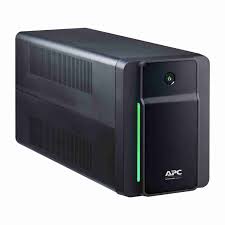



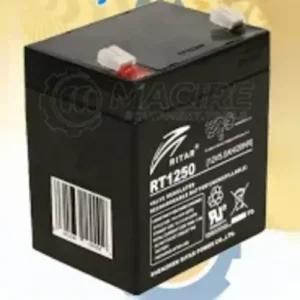
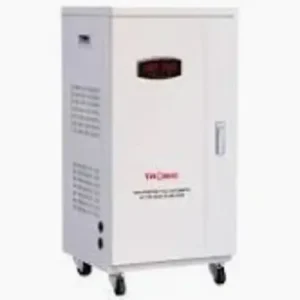

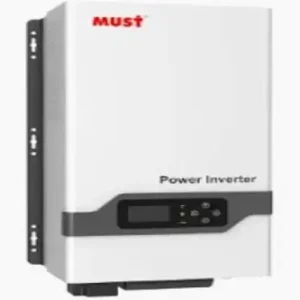

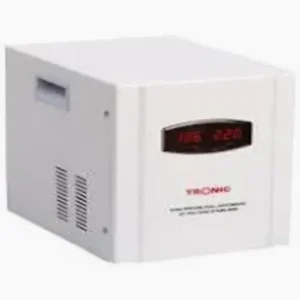
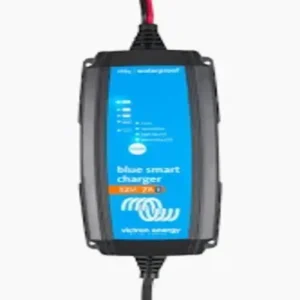
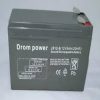
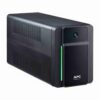
Reviews
There are no reviews yet.